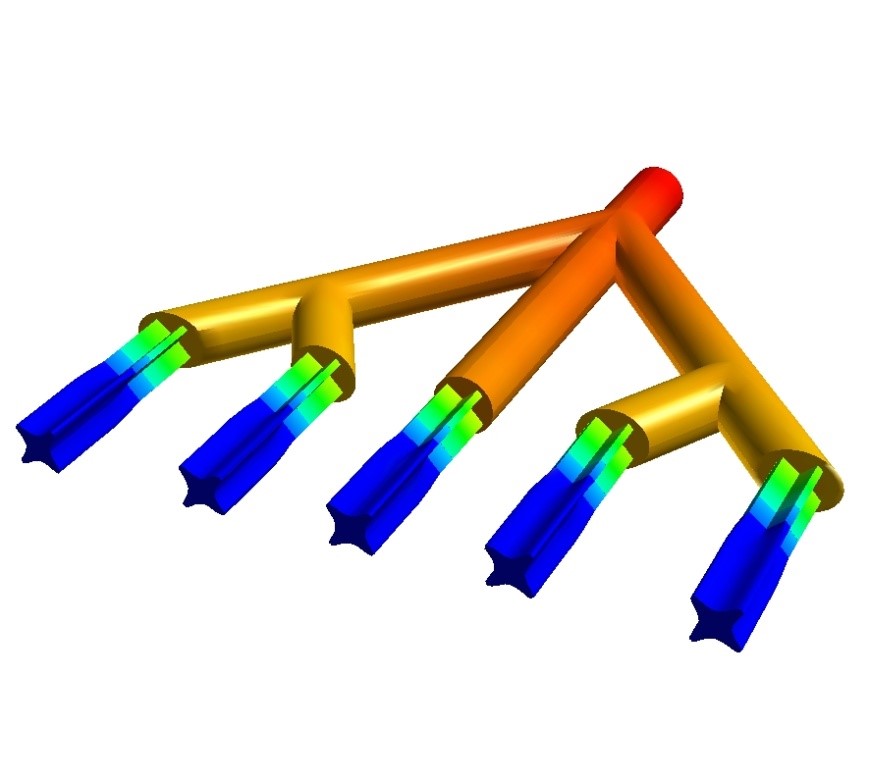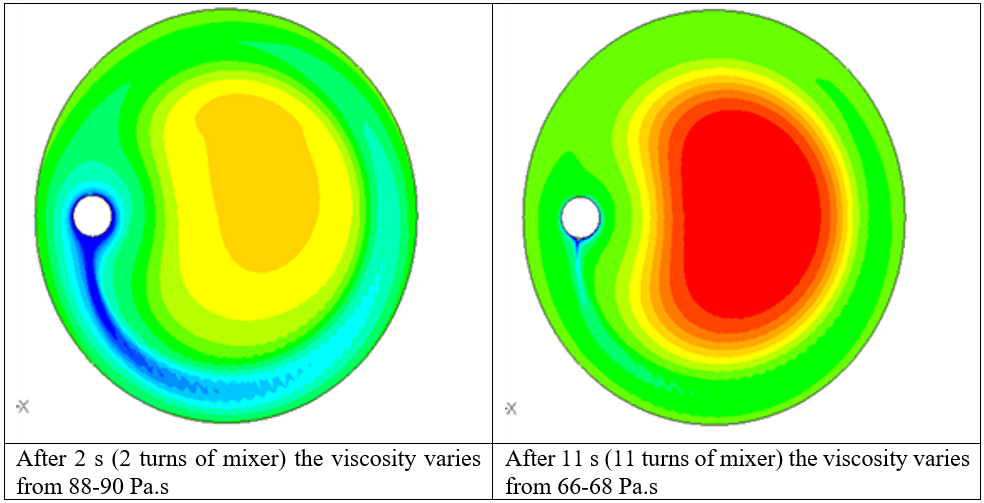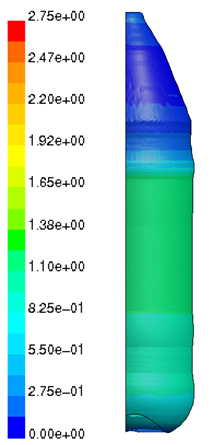Companies in the food & beverage industries in Australia and New Zealand, particularly SMEs, are increasingly looking to export to Asia to grow their businesses. In doing so, many are looking to implement new technologies, such as simulation, to enable their engineers to develop new products to meet particular market needs, as well as the process innovations that are often necessary to provide efficiencies of scale. Ensuring the product arrives at its destination in prime condition is also an important consideration.
The use of CFD and other simulation-based design approaches have been prevalent in aerospace and automotive industries for decades, but have only recently gained broader acceptance in some process-based industries such as food, dairy and beverages. To help whet your appetite (pun intended!), let us look at eight ways in which food & beverage manufacturers can harness cutting-edge simulation technology:
1. Extrusion
Many products are extruded so that a paste can be made into a defined shape and then dried. Everyday examples include pet food, snacks and pasta. This process involves the extrusion of a complex rheology fluid that is often non-Newtonian or viscoelastic in nature. The challenges are: (i) to avoid too high shear rate that could deteriorate the taste and/or food quality; (ii) to understand the food behavior inside the die; and (iii) to design/adjust the die in order to get the right extrudate shape. Systematic use of computational modelling allows engineers to address all of these issues and to eventually create efficient, repeatable extrusion processes.
2. Mixing
Mixing processes are ubiquitous in the food and beverage industries, with a variety of objectives including blending, dissolution of solids, maintaining suspension during temporary storage or to promote a rheological change in the fluid. The products often start with low viscosities but become thicker over time and exhibit either non-Newtonian or thixotropic (varying with time and shear rate) viscosities. Simulation can assist with the selection of mixer design, agitation rate and baffling requirements and allows engineers to increase product quality and manufacturing throughput by reducing blending times.
A good example is the stirring of yogurt which is a thixotropic fluid. In the example shown below, the viscosity is plotted on a plane through the tank after 2 and 11 revolutions of the stirrer and show the thinning of the fluid over time.
3. Cooling/Heating
Whether you are baking biscuits or making ice cream, the process needs a highly controlled thermal environment which produces uniform conditions and uses as little energy as possible. A small reduction in fan power can result in a massive saving on the electricity bill when a process is running 24 hours a day, 365 days per year. Computational modelling allows the positioning of heating/cooling units, air flow distribution and product location to be optimised to maintain product quality whilst reducing energy requirements.
4. Spray Drying
Spray drying is used to reduce volume and allow storage and easy shipping of a variety of food products, including milk powder, instant coffee and a variety of high-value nutraceutical products. Of crucial importance in this process is gaining an understanding of the drying and residence time of droplets/particles in the dryer and prevention of fouling of the dryer walls (an issue which can take many hours of lost production to remedy). These performance factors are determined by liquid feed location and spray angle which impact impact particle trajectories, and hence potential of fouling. The operator is able to modify parameters such as vane angle, spray nozzle locations and orientation based on simulation studies in order to achieve improved dryer performance.
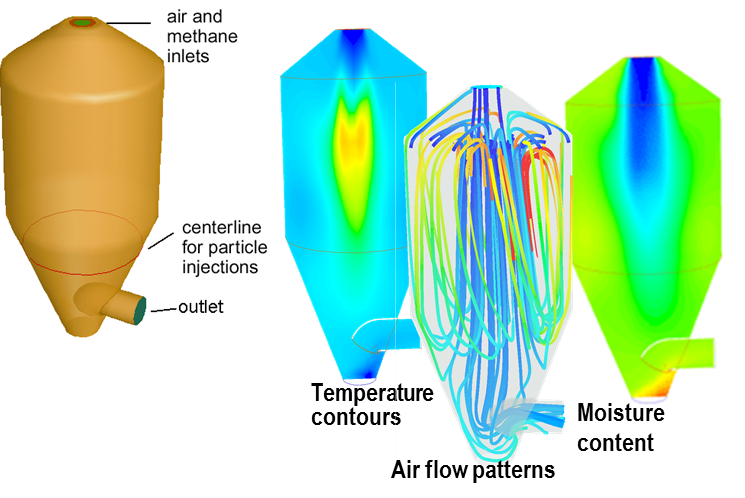
Figure 4: Images showing a typical spray dryer configuration and simulation results for the gas temperature, flow field and moisture content of the gas.
5. Rolling Processes
Some production processes require rolling operations, such as when making biscuits, pastry or chewing gum. The key objective is to adjust the rolling pressure to give the desired thickness whilst accounting for the non-linear, time-depend properties of the material. Wrigley’s use ANSYS software in the production of their chewing gum that require the modelling of a complex elastomer.
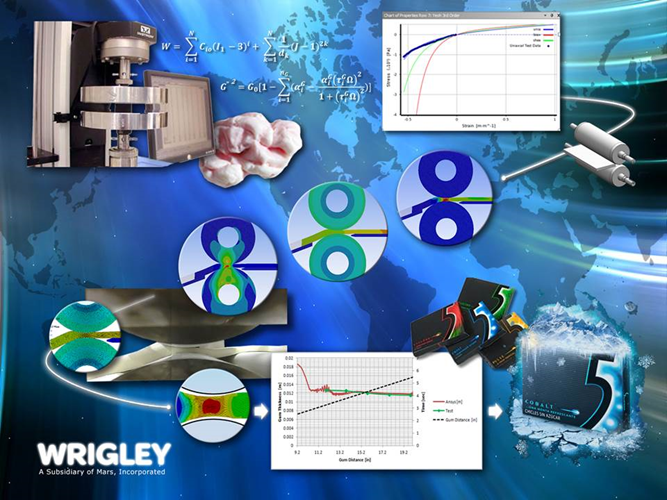
Figure 5: Combing complex material properties and detailed mechanical models to produce chewing gum (Image courtesy Wrigley, a subsidiary of Mars Inc.)
6. Packaging
Production of bottles and other containers requires a balancing act to use the minimum material possible but produce a container with sufficient strength to survive transport and everyday handling. A good example is blow moulding used in bottle production where the entire process can be simulated and optimised, allowing engineers to identify thin/weak spots and ultimately produce a bottle that requires minimal material while maintaining overall bottle strength.
Another interesting packaging example is the pouring of liquid from a flexible carton. We have all had bad experiences when pouring milk or juice from a carton so it is good to know that advanced modelling can help solve the problem! Tetra Pak used advanced CFD modelling to study the turbulent, free surface flow, coupled with the motion of the container to understand the gulping process and design better cartons. The image below shows the air being entrained into the carton as the carton sides flex while fluid pours out the spout.
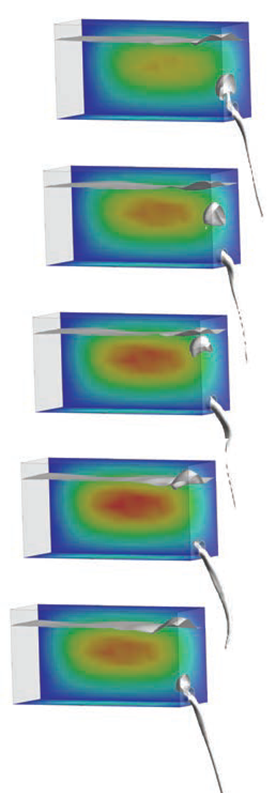
Figure 7: Liquid pouring from a flexible carton showing air backflow that causing the gulping behaviour (Image courtesy Tetra Pak)
7. Materials Handling
Using DEM (Discrete Element Method) simulation allows engineers to understand how particle-based interactions perform at the bulk solids level of a production line. Rocky DEM is the only DEM package capable of simulating truly non-round particles and concave shapes to account for the behaviour of realistic particle shapes. “One of the advantages of using Rocky DEM is the ability to model more realistic curved/concave shapes, an important feature of many of our food products,” says Chris Koh, Director and Global R&D Fellow at PepsiCo. “Using simulation models with simplified (i.e. flat) shapes can lead to omission of important physical interactions between uniquely-shaped materials, such as snack chips, and the processing equipment.”
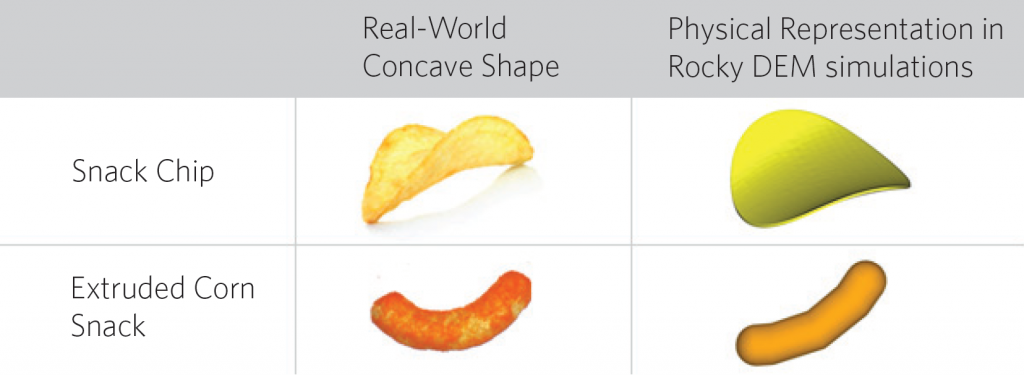
Figure 8: PepsiCo uses custom concave particle shapes to represent their various food products (Image courtesy PepsiCo)
PepsiCo uses Rocky DEM to evaluate all kinds of equipment issues related to speed, vibration, and material distribution, and to correct problems like material clogging and breakage. In this way, Rocky DEM simulations helped PepsiCo optimize the tumbling process used to apply seasonings to their snack chips, as well as improve upon their packaging process, both shown below.

Figure 9: Rocky DEM simulations of snack chips at different stages of production, including in a seasoning drum (left) and being filled into a bag (right) (Images courtesy PepsiCo)
8. Nutraceuticals
There is a greater awareness than ever before of the benefits of combining a healthy diet with the benefits of a variety of natural products that enhance overall health and have shown potential to combat cancer. We have all been told to eat vegetables of as many different colours as possible, as these provide our system with a wide range of anti-oxidants and other active compounds. There is now a growing industry to extract these beneficial chemicals from a wide variety of vegetable and fruit products, including residues that were previously discarded or underutilised by industry. Production technologies involve a wide range of processes with one example being the use of bubble column bioreactors. CFD provides ways to improve the design of such reactors by optimising the hydrodynamics, sparger design and assessing the impact of different feed injection points.
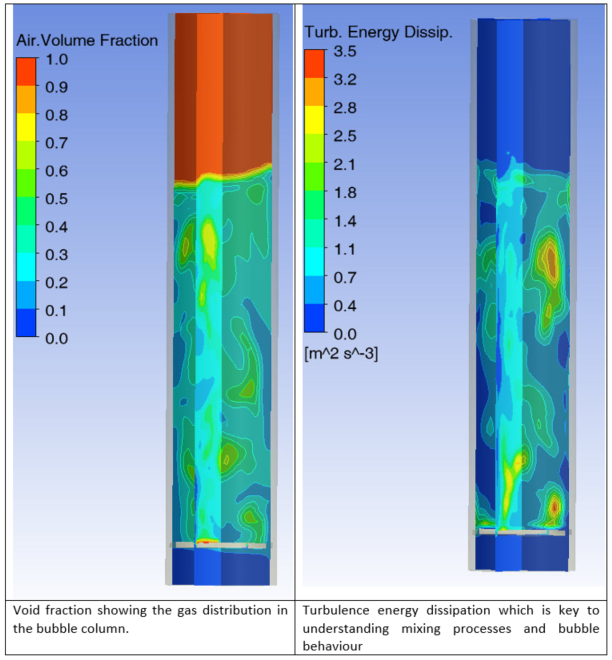
Figure 10: Bubble column simulation results. (Images courtesy of Dale McClure, John Kavanagh, Geoff Barton and David Fletcher, School of Chemical and Biomolecular Engineering, University of Sydney.)
These 8 examples are just a few of the possible applications of simulation in the food and beverage industries. There are many more that cover all manufacturing operations involved, ranging from mixing of powders, separation of dust, mixing of fluid streams, cooling and even sterilisation of equipment using steam or hydrogen peroxide.



